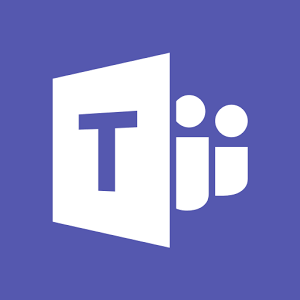 Running an ambitious small business can be isolating. Not least as owner-managers need to multi-task, often working long hours to keep their enterprises on track.
Running an ambitious small business can be isolating. Not least as owner-managers need to multi-task, often working long hours to keep their enterprises on track.
Wouldn’t it be great to have 24 hour access to peer support, additional expertise, virtual meetings and opportunities to brainstorm?
That in a nutshell is why Microsoft Teams is such a valuable option for anyone who owns and runs a small or medium sized enterprise.
Microsoft Teams profile
This recently launched feature of Microsoft’s Office 365 cloud services is positioned as a chat-based workspace. It’s geared towards connecting users to groups of people via a hub.
Your “Teams” are whoever you want to connect with online, for communication and collaboration. Each team operates in a form of chat room, called a channel. You can have diverse teams, but also different channels for the same team to cover specific projects or virtual meetings.
It enables team members to engage in joint working, accessing shared content. The online exchange of information is easy to follow, as conversations are threaded; the top being the most recent. Team members get notifications of updates.
Teams can also use voice over IP calls within group working.
Microsoft Teams can be used across multiple markets, and is currently available in 19 different languages.
Tools within Microsoft Teams
One of the most impressive aspects of Microsoft Teams is the way it gathers handy business tools to support information sharing in real time and meaningful collaboration.
While engaged in Teams, your group can instantly compare calendars, and switch between text chat, voice and video. You can also edit data together.
Team channels have access to T-Bot, which answers simple questions users may have.
Integrated Microsoft Office services include Word and Excel, but also SharePoint, OneNote, PowerPoint, Planner, Power BI, Delve and cloud storage. Among the benefits of the latter is that all team members can view the latest version of data, as content is synced and stored instantly.
Live Events
Among the most popular features of Microsoft Teams is Live Events.
Whether you are tech-savvy or an average Microsoft user, this makes it easy and quick to organise real-time, virtual gatherings of small numbers of contacts. It includes fully integrated video and content streaming, to make this live discussion highly interactive.
Microsoft Teams guide you effortlessly through the whole process of putting together your Live Event. This includes how to invite participants and issuing permissions. It also enables smooth handling of presentation materials and Q&As.
To engage with your Teams in Live Events, all participants need is a USB audio/video device.
Using Microsoft Stream, event organisers can add in participants using 3rd party hardware and software too. This further expands the locations and devices you can use, to address a diverse audience in real time.
The way it’s structured makes it straightforward to assign roles and responsibilities. The organiser is involved from beginning to end. They can format presentation material, with real time captions for presenters, and add in the option of a translation service.
Organisers have access to event reports and recordings for auditing or future use.
Generally, a Microsoft Teams Live Event would be hosted by a Producer. They orchestrate the actual event, managing the viewing experience. This includes supporting the presenter and keeping the organiser fully updated.
Presenters can share screen text, audio and video content. Then, they respond to Q&A sessions.
The organiser, producer and presenter could be all the same person, of course!
Access to Microsoft Teams
Microsoft Teams is usually available if you subscribe to Microsoft Office 365.
Connectors enable communication with outside services, such as GitHub, Zendesk, MailChimp and Salesforce. There is also a framework available to expand these connectors to include links to your own internal apps.
Interestingly, Microsoft is also exploring ways to integrate video conferencing hardware in to Teams, to support room-based meetings too.
There’s also plans to integrate Microsoft Teams with the tech giant’s virtual assistant, Cortana. Team members could then use conference room microphones and IP phones to issue commands and questions.

